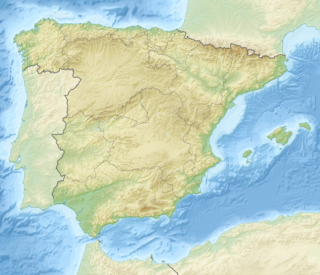 W
WThe Banu Gómez were a powerful but fractious noble family living on the Castilian marches of the Kingdom of León from the 10th to the 12th centuries. They rose to prominence in the 10th century as counts in Saldaña, Carrión and Liébana, and reached their apogee when, allied with Córdoba warlord, Almanzor, their head, García Gómez, expelled king Vermudo II of León and briefly ruled there. He would reconcile with the royal family, but launched two subsequent rebellions. On his death, the senior line of the family was eclipsed, but a younger branch would return to prominence, producing Pedro Ansúrez, one of the premier noblemen under king Alfonso VI and queen Urraca in the late 11th and early 12th centuries. The family would be portrayed in the Cantar de Mio Cid as rivals and antagonists of the hero, El Cid, and their rebellions would serve as a basis for the legend of Bernardo del Carpio.
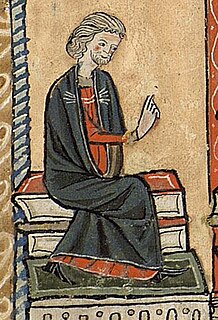 W
WBermudo Pérez de Traba, the eldest son of Count Pedro Fróilaz de Traba and his first wife Urraca Fróilaz, was a member of the most important medieval lineage in Galicia. He governed as a tenente Trastámara, Faro, Viseu, and Seia, owned vast estates in his native land, and was a generous patron of religious institutions.
 W
WFruela de Cantabria or Fruela Pérez was the second son of Duke Peter of Cantabria and brother of King Alfonso I of Asturias.
 W
WEleanor of Castile was an infanta of Castile and Queen consort of Navarre.
 W
WJuana Enriquez de Córdoba, 5th Lady of Casarrubios del Monte, a Castilian noblewoman, was Queen of Navarre from her marriage in April 1444 to King John II and Queen of Aragon from John II's accession in 1458 until her death. She married John three years after the death of his first wife, Queen Blanche I of Navarre.
 W
WEsteban Fernández de Castro (13th-century) was a Spanish nobleman, Lord of Lemos and Sarria.
 W
WMariana Fernández de Córdoba y Ayala, also known as Mariana de Ayala Córdoba y Toledo, was the fourth Lady of Casarrubios del Monte in the province of Toledo. She was the daughter of Diego Fernández de Córdoba y Carrillo, first Lord of Baena, and Inés Ayala y Toledo, third Lady of Casarrubios del Monte.
 W
WGarcía Garcés de Aza was a Castilian magnate "renowned for his wealth and dullness", yet "a prominent figure in the later Andalusian campaigns of the Emperor between 1150 and 1157". His toponymic appears in contemporary documents, referring to his ownership of the tenencia of Aza. His patronymic, "Garcés", reflects that he was son of count García Ordóñez, born to the latter's second wife, Eva, probably a Frenchwoman. After the death of García Ordóñez, she remarried to Pedro González de Lara, making García Garcés half-brother of Eva's children by Pedro and closely allied with the House of Lara.
 W
WMartim Gonçalves de Lacerda (14th-century) was a Castilian nobleman. He came to Portugal in times of John I, serving as a vassal of the Royal House.
 W
WPedro González de Mendoza was a Spanish cardinal and statesman who served as Archbishop of Toledo (1482–1495), Archbishop of Sevilla (1474–1482), Bishop of Sigüenza (1467–1474), and Bishop of Calahorra y La Calzada (1453–1467).
 W
WSalvador González was a Castilian nobleman active in the regions of La Bureba and Burgos in the middle third of the eleventh century. His origins are obscure, and he thus stands at the head of his lineage, the Salvadórez. He remained loyal to the ruler of Castile throughout his career, even when it meant a loss of position after the Bureba was acquired by neighbouring Pamplona.
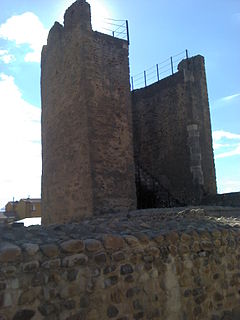 W
WGutierre Fernández was a Leonese nobleman who served as the majordomo (1110–17) of Queen Urraca until he was removed after imprisoning the queen's lover.
 W
WThe House of Guzmán is an old and noble Spanish family that emerged in Castile in the 12th century and became one of the most prominent dynasties of the Spanish kingdom until the 18th century. The original family gave rise to several branches, one of which became Dukes of Medina Sidonia from the 15th century to the 18th century, in turn giving rise to other branches including the Count-Dukes of Olivares.
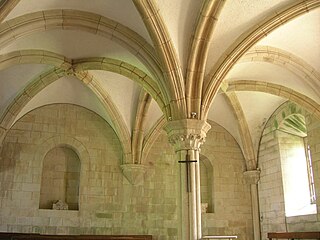 W
WHermenegildo Alóitez, was a magnate and member of the highest nobility of Galicia in the 10th-century. His parents were Count Aloito Gutiérrez and Argilo Alóitez, daughter of Alóito and Paterna, the founders of the monastery of Cis (Cines) in the territory of Nendos, A Coruña.
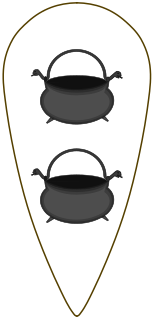 W
WThe House of Lara is a noble family from the medieval Kingdom of Castile. Two of its branches, those from the Duke of Nájera and from the Marquess of Aguilar de Campoo were considered Grandees of Spain. The Lara family gained numerous territories in Castile, León, Andalucía, and Galicia and members of the family moved throughout the former Spanish colonies, establishing branches as far away as the Philippines and Argentina. The House of Lara were most prominent in the history of Castile and León from the 11th to the 14th century. For example, Álvaro Núñez de Lara served as regent for Henry I of Castile. They were dispossessed of much of their land by Peter the Cruel, but most was returned by Henry II.
 W
WVela Jiménez who appears also as Vigila Scemeniz, is documented on two occasions as Count of Álava between 882 and 883 in the Codex Vigilanus, compiled in 881 with two large paragraphs added subsequently describing the events that took place in 882 and 883.
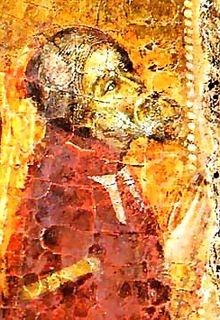 W
WDon Juan Manuel was a Spanish medieval writer, nephew of Alfonso X of Castile, son of Manuel of Castile and Beatrice of Savoy. He inherited from his father the great Seigneury of Villena, receiving the titles of Lord, Duke and lastly Prince of Villena. He married three times, choosing his wives for political and economic convenience, and worked to match his children with partners associated with royalty. Juan Manuel became one of the richest and most powerful men of his time, coining his own currency as the kings did. During his life, he was criticised for choosing literature as his vocation, an activity thought inferior for a nobleman of such prestige.
 W
WRodrigo Alfonso de León (1214-1268) was a Spanish nobleman, Lord of Alexer. and Adelantado of León.
 W
WGarcía Méndez de Sotomayor or Garcí Méndez II de Sotomayor, the second of his name was a Castilian noble and head of the Méndez branch of the House of Sotomayor who founded the Señorio del Castillo de Carpio.
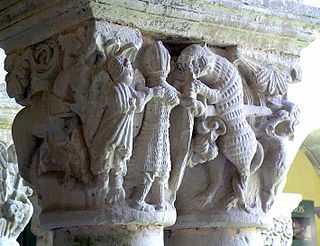 W
WRodrigo Muñoz, son of Count Munio González and Mayor Muñoz, was a Castilian magnate in the kingdoms of León and Castile. His tenancies were mostly in Cantabria, in the northern Castilian lands bordering the Basque country.
 W
WPedro Núñez de Guzmán (12th-century) was a Seville nobleman, Lord of Guzmán.
 W
WMunio Núñez, Count of Castile, was a nobleman who was almost certainly the son of Nuño Muñoz, who would have been the son of Munio Núñez de Brañosera who in 824, with his wife Argilo, granted the Carta Puebla de Brañosera, the Fuero similar to the medieval English custumal that stipulated the economic, political, and social customs and regulations for governing a town, in this case, Brañosera that had just been repopulated.
 W
WOria de Pallars was a medieval Spanish noblewoman, countess of Pallars Jussà and wife of Arnau Mir del Pallars Jussà. Oria was the daughter of Bernat de Entenza and his wife Garsenda. She founded the Cistercian monastery of Santa Maria de la Gloria, in Casbas de Huesca in 1173, with Arnau's support.
 W
WJuan Pérez de Guzmán (1240–1285) was a Spanish nobleman, Lord of Guzmán, and Gumiel de Mercado.
 W
WRodrigo Fernández de Castro, called the Bald, was a Castilian nobleman and soldier. One of the founders of the House of Castro, he was the second son of Fernando García de Hita and Tegridia, sister or aunt of Count Rodrigo Martínez and relative of the Ansúrez family. His paternal grandfather may have been García Ordóñez, who died at the battle of Uclés in 1108.
 W
WGutierre Rodríguez de Castro also known as Gutierre Ruiz de Castro and nicknamed el Escalabrado was a Castilian nobleman, member of the House of Castro as the son of Rodrigo Fernández de Castro and his wife Elo Álvarez, daughter of Álvar Fáñez and his wife Mayor Pérez, daughter of Count Pedro Ansúrez.
 W
WDiego Rodríguez Porcelos, was the second Count of Castile, succeeding his father Rodrigo. He did not govern Álava, however, as his father had done, since this responsibility fell on Count Vela Jiménez. Between 882 and 884 and under the mandate of King Alfonso III of Asturias, he was in charge of the repoblación of Burgos and Ubierna.
 W
WGómez González de Traba was a Galician nobleman, a count from 1169, and a wealthy and influential figure in the Kingdom of León. He was the second son of Gonzalo Fernández de Traba and his first wife, Elvira Rodríguez. His elder brother, Fernando González, died prematurely in 1166 and Gómez became the head of the House of Traba.